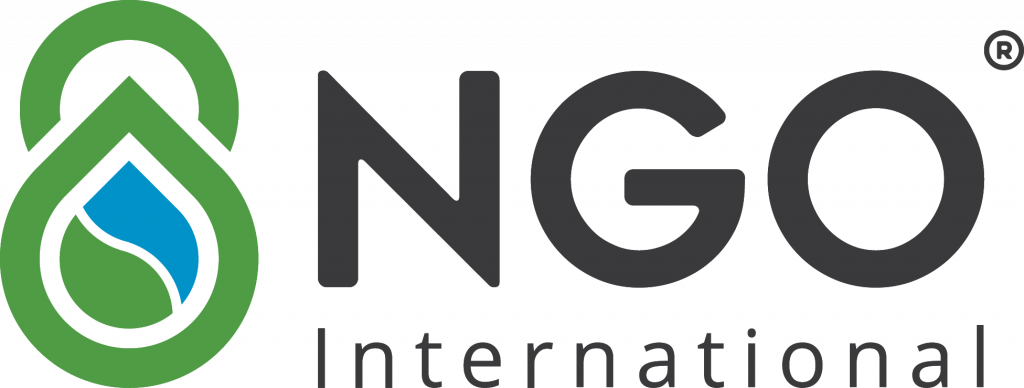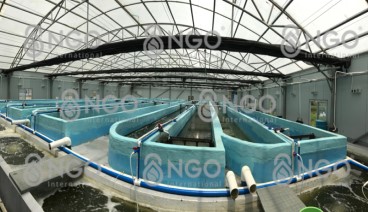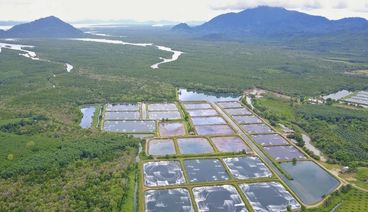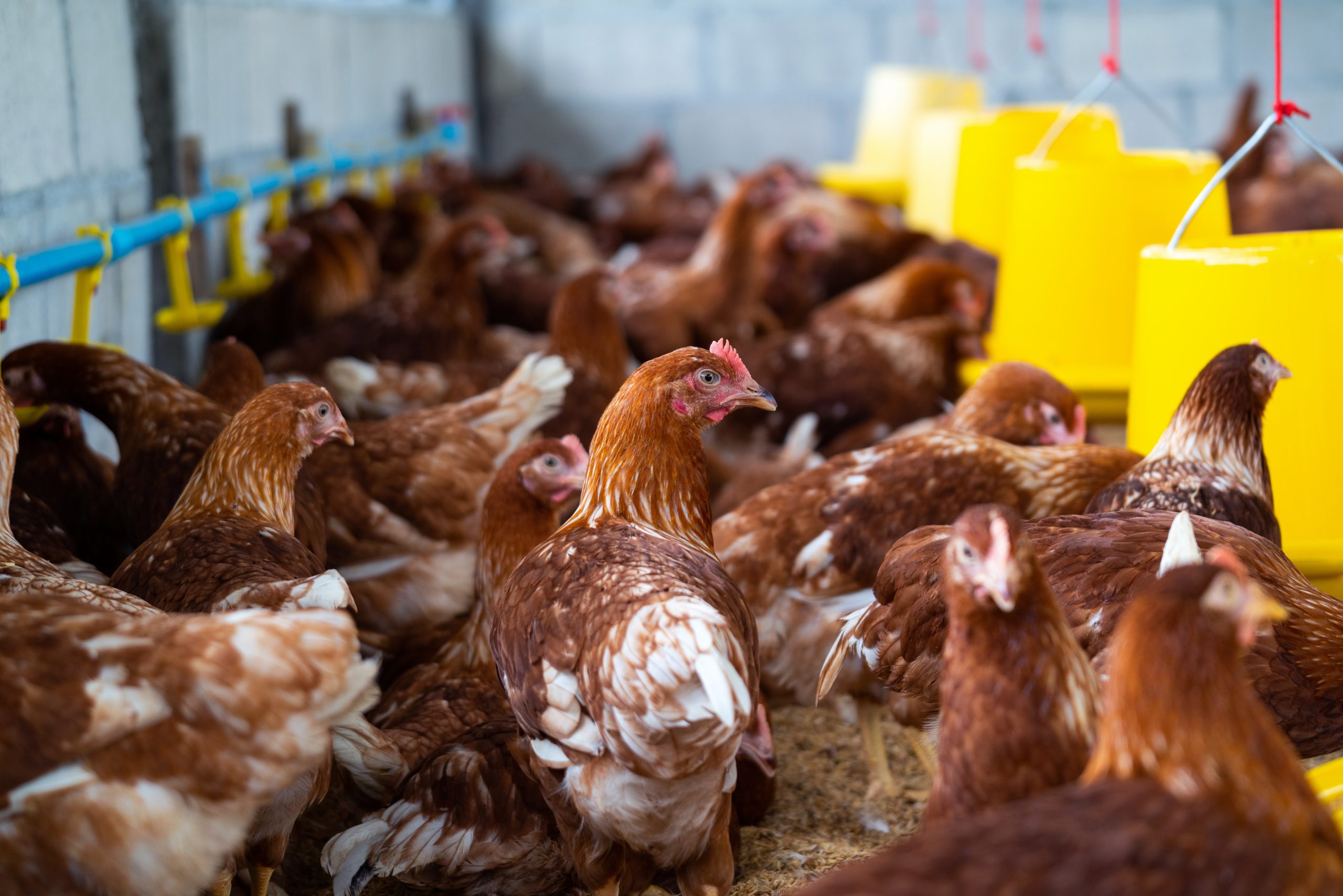
According to data from the Ministry of Agriculture and Rural Development, small-scale farming still accounts for a large proportion of the pig and poultry farming industries, specifically 65-70% of total pig production and 50-60% of total poultry production.
Small-scale farming, lack of infrastructure, and technology are among the reasons why livestock farming is consistently a highly polluting industry.
Wastewater from livestock and poultry farming is one of the types of wastewater with high potential for environmental pollution due to its high content of organic matter, suspended solids, N, P, antibiotic residues, and pathogenic organisms. The discharge limits for effluent parameters are stipulated in QCVN 62-MT:2016/BTNMT: National Technical Regulation on Livestock Wastewater.
I. Main Components and Harmful Effects of Livestock and Poultry Wastewater
– Organic and Inorganic Substances:
- Organic compounds account for 70-80%, mainly including: Cellulose, Protein, Amino Acids, fats, Carbohydrates, and their derivatives found in manure and leftover feed. Most of these organic compounds are readily biodegradable.
- Inorganic compounds account for 20-30%, mainly including: Sand, soil, salt, Urea, Ammonium, Chloride salts, (SO4)2-…
These are readily decomposable components that cause foul odors, generate toxic gases, reduce dissolved oxygen levels in water, and especially if left untreated, will cause environmental pollution upon discharge into receiving waters, leading to eutrophication of the ecosystem, affecting crops, and providing a significant nutrient source for harmful bacteria to thrive.
– Nitrogen and Phosphorus (N and P):
- The ability of livestock and poultry to absorb Nitrogen and Phosphorus is very poor, so when they consume feed containing Nitrogen and Phosphorus, they excrete them in their manure and urine. Therefore, swine wastewater typically contains very high levels of Nitrogen and Phosphorus.
- If oxygen is sufficiently supplied, the decomposition products of livestock wastewater are: CO2, H2O, NO2, NO3. Conversely, under oxygen-deficient conditions, the anaerobic decomposition of organic compounds produces CH4, N2, NH3, Indole, Skatole… these gases create foul odors in the farming area, adversely affecting the air environment.
– Pathogenic Microorganisms:
- Besides the content of inorganic and organic matter, Nitrogen, and Phosphorus, livestock wastewater also contains many types of bacteria, viruses, and helminth eggs and larvae that cause disease. This is a factor that directly affects the health of humans and animals in the area.
According to A. Kigirop (1982), pathogenic bacteria such as Salmonella, E. coli, and Bacillus anthracis spores can infiltrate groundwater. Salmonella can penetrate 30-40 cm deep into the surface soil layer in areas that regularly receive wastewater. Helminth eggs and bacteria can be spread very far and quickly when they contaminate surface water, creating epidemics for humans and livestock, causing enormous damage, and thus must be treated before being discharged into the environment.
Below is a table of characteristic pollution parameters commonly found in livestock wastewater, including important indicators that reflect the pollution level of this wastewater:
| Parameter | Unit | Typical Value | Significance |
| Biochemical Oxygen Demand (BOD5) | mg/L | 1,000 – 4,000 | Assesses the amount of oxygen required for microorganisms to decompose organic matter. A high value indicates a large degree of organic pollution. |
| Chemical Oxygen Demand (COD) | mg/L | 2,000 – 7,000 | The amount of oxygen needed to completely oxidize organic and inorganic substances. The higher the COD, the more severe the pollution. |
| Total Suspended Solids (TSS) | mg/L | 500 – 2,000 | Measures the amount of undissolved solids in water. A high value can reduce light and oxygen penetration in the water. |
| Total Nitrogen (T-N) | mg/L | 100 – 800 | A nutrient that pollutes water sources, leading to eutrophication if in excess. |
| Ammonium (NH4⁺-N) | mg/L | 50 – 400 | High ammonium content from livestock manure causes foul odors and adversely affects aquatic life. |
| Total Phosphorus (T-P) | mg/L | 10 – 94 | An agent that causes eutrophication in water sources, affecting the ecosystem and water quality. |
| pH | – | 6.5 – 8.5 | A pH that is too high or too low adversely affects living organisms and wastewater treatment processes. |
| Coliform bacteria | MPN/100mL | 10⁴ – 10⁷ | An indicator of microbial contamination, especially of bacteria pathogenic to humans. |
| Ammonia (NH3) | mg/L | 0.5 – 50 | A compound toxic to fish and aquatic organisms at high concentrations, also creating a characteristic foul odor. |
II. Challenges in Livestock Wastewater Treatment
a. High Investment and Operating Costs
- A wastewater treatment system to meet QCVN 62 requires significant installation, maintenance, and operating costs. This poses a major challenge for small and medium-sized farms or individual livestock households.
- Additionally, the cost of chemicals and energy for treatment is also increasing, while the financial capacity of many livestock households is limited, making it difficult to maintain the treatment system.
b. Lack of Manpower and Technical Knowledge
- Many farmers are not properly trained in wastewater treatment technologies, leading to inefficient or improper operation.
- In rural areas, the lack of skilled and specialized technical personnel for managing and operating treatment systems also increases the risk of incidents, reducing the effectiveness of wastewater treatment.
c. Sludge Treatment and Reuse Issues
- During the livestock wastewater treatment process, a large amount of sludge from manure as well as biological sludge from the wastewater treatment system is generated. Due to the high cost of sludge treatment, most farms are applying reuse or composting methods to make fertilizer; however, the methods are still rudimentary and do not completely remove pollutants before reuse.
d. Climate Change and Greenhouse Gas Emission Reduction Requirements
- The livestock industry is a major source of greenhouse gas emissions, and wastewater treatment can also generate greenhouse gases, especially methane (CH₄) and nitrous oxide (N₂O).
- The pressure to reduce greenhouse gas emissions to protect the environment requires the livestock industry to invest in technologies to treat gas emissions, which increases costs and demands stricter control processes.
Current Livestock Wastewater Treatment Technologies and Their Limitations
| Polluting Waste | Treatment Measures | Remarks |
| Solid Waste Treatment: Solid waste in livestock farming typically includes manure, bedding, feathers, and organic matter from slaughterhouses… | Composting and biogas technology are the two most common methods currently in Vietnam.
– Composting: common composting methods are hot composting, cold composting, and mixed composting. – Biogas technology: is an anaerobic digestion process that takes place in sealed chambers created by humans using various materials and methods such as brick and cement; composite, nylon bags… |
Livestock solid waste is mainly treated by hot composting and Biogas digesters (45-50 days).
– About 40%-70% is composted (usually only hot composting), packaged, and sold as fertilizer depending on the region. – About 30%-60% (depending on the region) of the remaining solid waste is often discharged directly into fish ponds, the environment (canals, ditches, land, …), or composted with wastewater in a Biogas digester. – Most livestock facilities do not have a complete manure treatment plant that meets discharge standards. |
| Liquid Waste Treatment: Liquid waste includes urine, water from cleaning stables, washing livestock, cleaning slaughterhouses, equipment, etc. | Liquid wastewater in livestock farming is often treated through Biogas digesters, biological ponds, and wastewater treatment systems; some is discharged directly into the community’s general drainage systems.
Technologies applied in livestock wastewater treatment – Anaerobic tank system: Uses anaerobic microorganisms to decompose organic matter, producing biogas (biogas), UASB tank. – Biological pond: A pond containing wastewater where natural microorganisms help decompose organic matter. – Aerobic biological treatment: Uses oxygen for microorganisms to decompose organic matter: aerotank, MBBR, SBR… – Chemical treatment: Uses chemicals to precipitate, neutralize, and disinfect wastewater. |
Current treatment methods have limitations such as:
– Requires a large area, does not completely treat inorganic pollutants and bacteria (Biogas, biological ponds), – Dependent on weather, prone to groundwater contamination. – Requires a continuous oxygen supply, increasing costs; must be managed to avoid odors, and large sludge volumes require further treatment (aerobic biological). – High chemical costs, potential for pollution from excess chemicals. – High investment and maintenance costs. – Does not fully utilize waste sources for other purposes to minimize environmental impact and save costs for businesses. |
| Gaseous Emission Treatment | Livestock farming emits many types of gases (CO2, NH3, CH4, H2S…) which are major greenhouse gases, resulting from respiration, digestion of animals, composting, feed processing… estimated at several hundred million tons/year. | Currently, the treatment of gaseous emissions from livestock activities in Vietnam has not received much attention, but its impacts require appropriate investment and treatment policies. |
III. Solutions to Challenges in Livestock Waste Treatment from NGO International Co., Ltd
a. Reuse of Solid Waste and Nutrients in Wastewater
– Implement source separation of wastewater and solid waste using the biological adsorption filtration method. Solid waste (livestock manure, leftover feed), Ammonium, and phosphorus are adsorbed onto the material for reuse as organic fertilizer.
– At-source waste management helps reduce the load on the wastewater treatment system and creates beneficial by-products for agriculture.
b. Targeted Wastewater Treatment for Different Reuse Purposes
– Wastewater is the largest source of waste generated on livestock farms; therefore, reusing this water helps save irrigation water and chemical fertilizers, as the treated effluent contains nutrients beneficial for crops. This is particularly useful in the context of water shortages and helps reduce pressure on clean water resources.
NGO International Co., Ltd is committed to providing the most advanced and modern technologies to help businesses not only minimize discharge but also enhance production efficiency and protect the environment. Contact us to learn more about livestock wastewater treatment solutions for your business via phone at 024.7300.0890 or email office@8ngo.com for a direct consultation.


 Tiếng Việt
Tiếng Việt